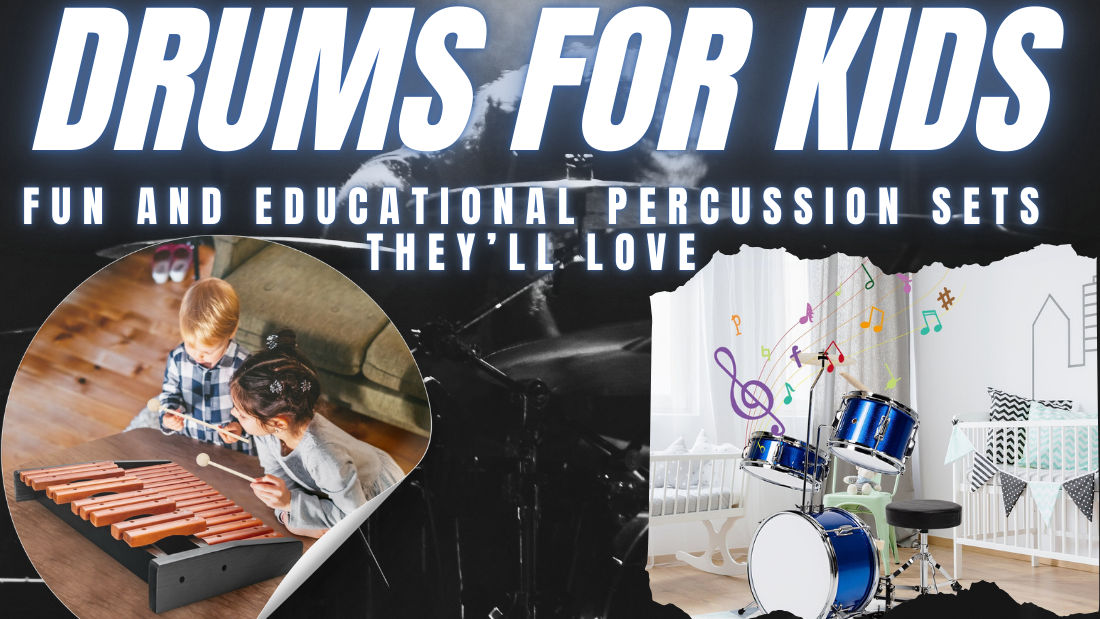When it comes to fostering creativity, building confidence, and keeping kids engaged, drums and percussion sets top the list. These instruments are more than just tools for making noise; they’re a gateway to rhythm, coordination, and a lifelong love of music. Whether your little one is a future rock star or simply loves to explore sounds, the right drum set can make all the difference. Let’s dive into why drums for kids are a must-have, explore the best options, and discover how they combine fun and education seamlessly.
Why Drums Are Perfect for Kids
Drumming isn’t just fun—it’s also incredibly beneficial for children’s development. Here’s why:
-
Encourages Creativity
Drumming gives kids a blank slate to express themselves. With each beat, they create something uniquely theirs. This fosters a sense of accomplishment and boosts self-confidence. -
Develops Motor Skills
Playing drums requires coordination between hands and feet, improving fine and gross motor skills. Plus, it strengthens their ability to multitask. -
Teaches Patience and Discipline
Learning to play a percussion set teaches kids to focus, listen, and practice. Over time, they build the patience and discipline needed to master an instrument.
What Makes a Good Drum Set for Kids?
Before choosing a drum set, it’s essential to know what to look for. The best percussion sets are:
- Durable: Kids can be rough, so sturdy construction is a must.
- Sized Right: Smaller drums are easier for little hands to play.
- Interactive: Sets with additional features like cymbals, tambourines, or even lights keep kids engaged.
Top Picks for Kids' Drums
1. Mini Rock Drum Set
Perfect for budding rockstars, this set includes a snare, bass drum, and cymbals. Its compact size and vibrant colors make it ideal for younger kids.
Complete Kids Junior Drum Set Children Beginner Kit
2. Interactive Electronic Drums
For tech-savvy kids, electronic drum sets with built-in beats and sound effects are a hit. They allow for volume control—great for parents!
Set 7 Kit Electronic Roll Up Pads MIDI Drum
3. Percussion Kits
These kits feature a mix of drums, tambourines, maracas, and more. They’re an excellent introduction to rhythm and coordination.
25 Notes Xylophone Wooden Percussion Educational Instrument with 2 Mallets
Benefits of Learning Percussion Early
Improved Cognitive Skills
Drumming stimulates brain activity. Studies show that playing percussion improves memory, concentration, and problem-solving skills.
Boosts Emotional Well-Being
Music is therapeutic, and drumming can be an outlet for emotions. It helps kids manage stress and express feelings in a constructive way.
Encourages Teamwork
In group settings, percussion fosters collaboration. Kids learn to listen to others and play in sync, building essential social skills.
How to Introduce Drums to Kids
Make It Fun
Kids are more likely to stick with an instrument if they enjoy it. Incorporate games, use their favorite songs, and encourage freestyle sessions.
Start Small
Begin with basic rhythms and simple beats. As kids grow more comfortable, gradually introduce more complex patterns.
Create a Practice Routine
While drumming should be enjoyable, consistency is key. Setting aside 10–15 minutes daily can yield impressive progress.
Choosing Between Acoustic and Electronic Drums
Acoustic Drums
Acoustic Drums provide a traditional drumming experience. They’re louder and more immersive but might not be ideal for small apartments or shared spaces.
Electronic Drums
With adjustable volume and a variety of sound effects, electronic drum sets are versatile and parent-approved. They’re also easier to store and transport.
Maintenance Tips for Drum Sets
- Clean Regularly: Wipe down drum surfaces to keep them dust-free.
- Store Properly: Use covers or cases to protect the drums when not in use.
- Check for Damage: Periodically inspect the set for loose parts or wear and tear.
FAQs
1. What age is appropriate to start drumming?
Kids as young as 3 years old can start with basic percussion instruments like hand drums or tambourines. Full drum sets are better suited for ages 5 and up.
Steel Tongue Handpan Drum 13 Notes
2. Do kids need professional lessons?
While professional lessons can help, they’re not mandatory. Online tutorials, apps, and parental guidance can be equally effective for beginners.
3. Are drums noisy?
Acoustic drums can be loud, but electronic sets offer volume control. Additionally, drum pads can reduce noise while maintaining the feel of drumming.
4. How much space does a drum set need?
Kids’ drum sets are compact and designed for smaller spaces. They can easily fit in bedrooms, playrooms, or even a corner of the living room.
Conclusion
Drums for kids are more than just instruments—they’re tools for growth, learning, and endless fun. From boosting cognitive skills to fostering creativity, the benefits are undeniable. Whether you choose a traditional drum set or an interactive electronic kit, you’re setting your child up for a lifetime of musical exploration.
So, why wait? Let your little one unleash their inner drummer today! With so many amazing percussion sets available, there’s something to match every child’s personality and skill level.








